












“Ayubowan” & ‘’Vanakkam’’ Welcome to a tropical paradise. You will be welcomed & greeted by your guide or our representative on arrival at the waiting area at Katunayake International Airport. You will travel to Negombo. Travel time is approximately 30 minutes depending on the road traffic.
Rest of the day you can relax & enjoy.
Photo by Florian Wehde on Unsplash

After breakfast, you will travel to Dambulla.
Dambulla is an ancient city that offers many natural and spiritual wonders to be discovered. It is one of the most sought-after attractions in our Sri Lanka tour packages filled with dominance and epic grandeur. With its scenic spots such as the ironwood forest, the breathtaking rose quartz mountain, the world-famous Rangiri International Stadium, and the serene landscape of "Na Uyana Aranya" the majestic city of Dambulla is sure to be one of your favorites in an adventurous Sri Lanka trip to explore and enjoy the magnificence of this ancient paradise. As you traverse this fascinating city, you are welcomed by the largest and most well-preserved cave complex on the Island, filled with rich and colorful paintings and sculptures depicting the bold history of Sri Lanka. Yes, you are absolutely right! This is your chance to grab the perfect adventurous and fun getaway on this beautiful tropical Island.
You will visit Dambulla Cave Temple. Dambulla Golden Rock Cave Temple is a vast isolated rock mass 500ft high and 1.6 km around the base. Here is found the impressive Rock Temple dating to the First Century BC. The caves of Dambulla sheltered King Walagamba during his 14 years of exile from Anuradhapura. When he regained the throne he built the most magnificent Rock Temples to be found on the Island. The complex consists of five caves with over 2000 sq. meters of painted walls and ceilings. It is the largest area of paintings found in the world. It is a UNESCO World Heritage site. In the first cave is a recumbent image of the Buddha 14 meters long cut out of the rock. There are images of deities associated with Buddhism all around. The frescoes on the ceiling date back to the 15th - 18th centuries. In the second cave, the finest and the largest of all, there are 150 life-size statues of Gods from the Buddhist religion along with numerous images of the Buddha himself.
Afterward evening you can enjoy a Jeep Safari at Minneriya National Park (Duration – 2 hours). It’s on the banks of the Minneriya reservoir, which was built in the 4th century A.C. Minneriya is a hide-out for many elephants, where you could see herds of elephants approximately 50 to 60 elephants in a herd. Here from July to September one of the world's top ten wildlife spectacles takes place known as ‘The Gathering’, more than 250 elephants gather around the Minneriya water tank in search of water and food. Apart from elephants, it is a habitat for migrant and resident bird species like Grey herons, open-built storks, Painted storks, etc. And also, you could see 3 different species of monkeys Silica Make, Pink Faced Leaf monkey, and Grey Langer.
Late evening you will have a romantic dinner at the hotel premises.
Photo by Agnieszka Kowalczyk on Unsplash
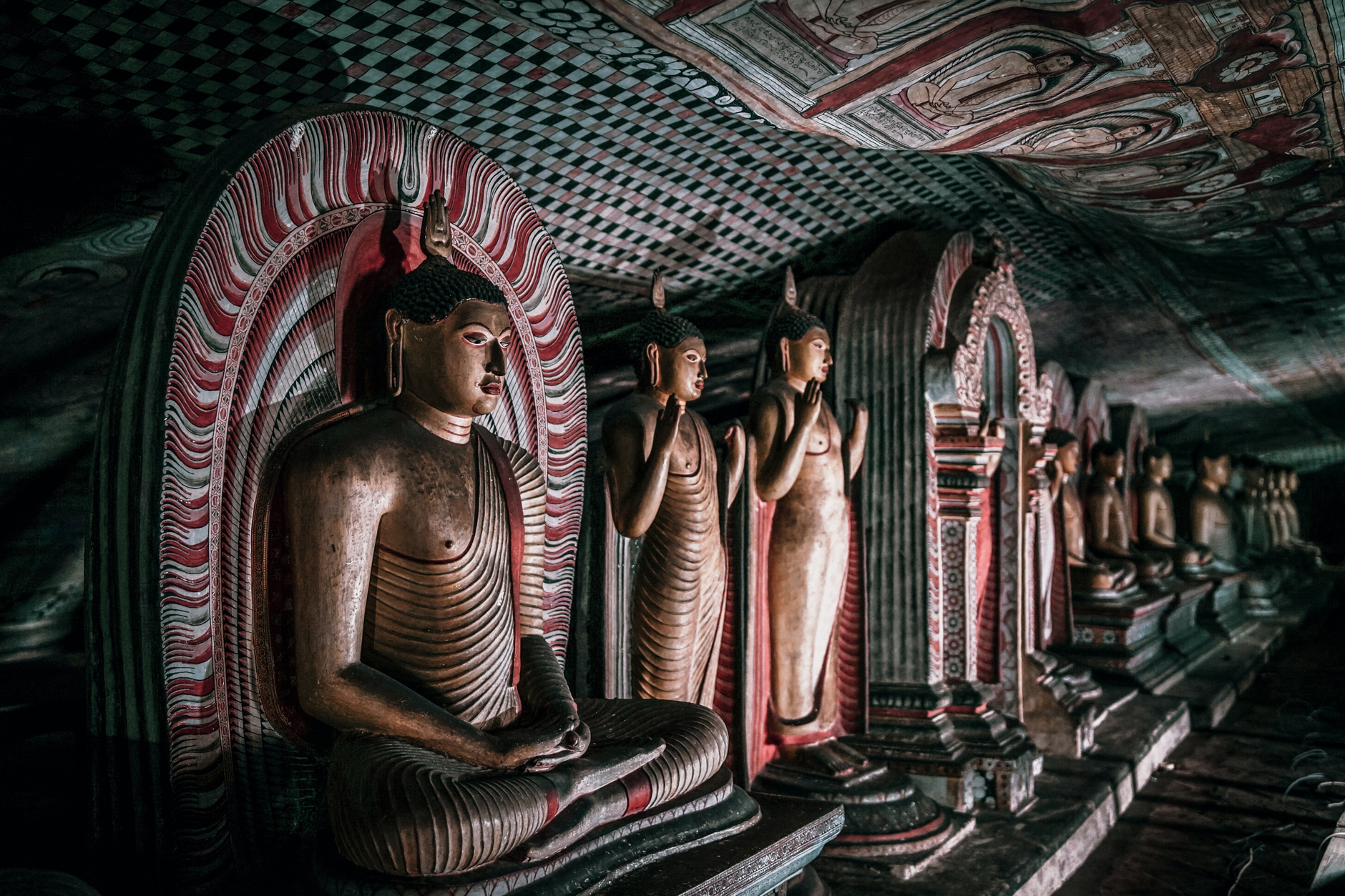
After Early breakfast you will enjoy a safari at Kaudulla National Park – this National Park is the most recent to be added to the list of 15 parks in the country. Famous for its elephants and bird population, species include the nation’s largest bird, the Lesser Adjutant, and the Pompadour Green Pigeon. Built around the year 300 AD, the tank slowly fell into disrepair and was rebuilt in 1959, and with its variety of plant life has now become home to 24 species of mammals, 25 species of amphibians, and countless bird types. The endangered Rusty Spotted Cat can be spotted in Kaudulla National Park, as well as large herds of Asian Elephants, elusive Leopards, and both Sambar and Axis Deer.
After Lunch, you will travel to Polonnaruwa, which bears a rich history to be discovered you. Welcome to the city that was once a kingdom and thus protects some of the best-preserved archaeological relics of the world. You walk into the remnants of the Royal Palace of King Parakramabahu, the archaeological museum of Polonnaruwa, the Polonnaruwa Vatadage, and many more well-conserved historical sites. You are amazed by the details put into each of these remnants. You then visit a royal Sri Lanka attraction called Parakrama Samudraya, a water reservoir consisting of five lakes. You spend the evening beside one of these lakes surrounded by lush greenery. – A moment to remember!
Polonnaruwa was the medieval capital of Sri Lanka, and today it is one of the most beautiful centers of Sri Lanka’s cultural heritage and a UNESCO Heritage site. With its comparatively brief history and a dozen rules, it far more completely preserves ruin than Anuradhapura. Visit the ancient ruins and Gal Vihara complex, where 3 gigantic Buddha statues are carved out of a single rock. You also will be able to see the Toque Macaque Monkeys found only in Sri Lanka.
After back to the hotel evening enjoy Ayurveda Massage for one hour each per person to rejuvenate your body. Ayurveda is the ancient health care system in South Asia that has been passed down from father to son and is based on herbs and diet. It is one of the world’s oldest forms of healing and treatment. You will find some of the best Ayurveda practitioners in Sri Lanka. Ayurveda is a well-known treatment for Stress, Diabetes, Migraine, Asthma, Arthritis, the Immune System, and High Blood Pressure. Ayurveda is derived from Sanskrit for life (Ayuh) and knowledge (Veda), which means ‘the science of life’. Therefore, Ayurveda is one of the oldest medical sciences in the world and its origins date back as far as 5,000 years in South Asia.
Image by Roshan Thiranajaya from Pixabay
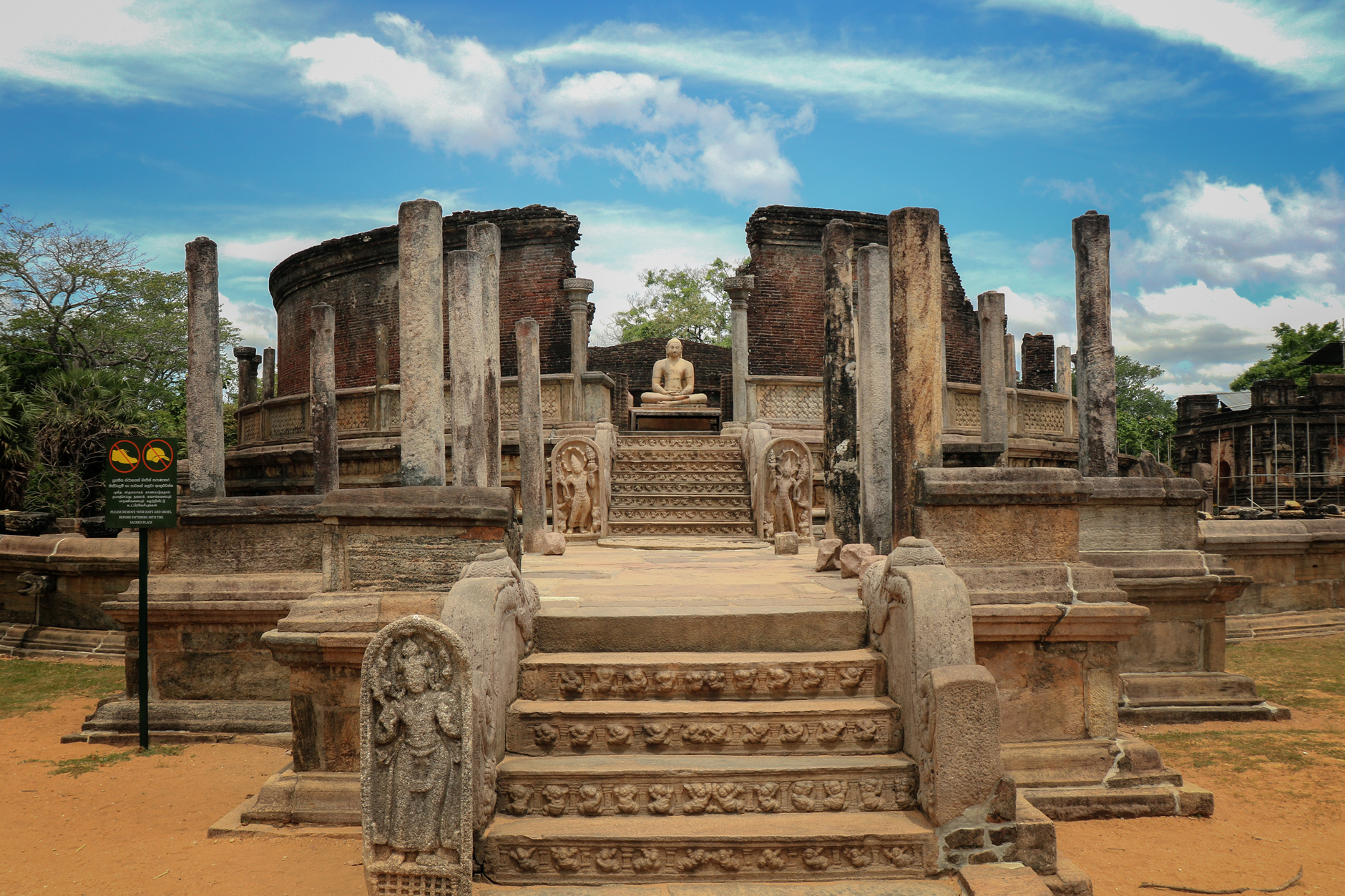
After breakfast, you will visit Sigiriya Rock Fortress. Sigiriya is a UNESCO World Heritage site that is proposed to be the 8th wonder of the World. Sigiriya, a massive rock in the green scrub jungle, is perhaps the most memorable place for visitors to Sri Lanka. The site was known from ancient times as a hermitage for Buddhist monks. A well-planned monastic complex included caved temples, bathing pools, lovely ponds, and Asia's oldest surviving landscaped gardens. The "Lion Stairway", the "Mirror Wall" and the "Water Gardens" are its other highlights. The ruins of the capital built by the parricidal King Kashyapa I (477–95) lie on the steep slopes and at the summit of a granite peak standing some 370 m high (the 'Lion's Rock', which dominates the jungle from all sides).
After you will travel to Wilpattu. Travel time is approximately 2 hours and 30 minutes.
Afternoon you will take a safari to discover Wilpattu National Park. Wilpattu National Park (‘Land of Lakes’) is situated on the Northwest coast near the ancient city of Anuradhapura. It is the largest and oldest National Park in Sri Lanka consisting of 140,000 hectares of mostly dry zone evergreen forest cover and a coastal belt to the West. This is one of the best places to see leopards in Sri Lanka alongside Yala National Park. The open grassy plains set within the thick dense scrub jungle. The wetland includes around 48 shallow natural lakes known as Villus, natural basins that are filled up with rainwater, and two saltwater lakes. These natural lakes are the most important parts of the complex ecosystem in the park. The wildlife is abundant around the lakes and coastal belt at Wilpattu National Park, here you may spot the White Ibis, Open Bills, Painted Storks Spoonbills, Egrets, Whistling Teals, Kingfishers and you may also see water buffalos, monitors, and crocodiles. Butterflies recorded include the Great Egg fly, Great Orange Tip, Glad-eye Bush brown, Blue Mormon, Common Mormon, Common Rose, and Crimson Rose. Diverse varieties of colorful butterflies can be seen in the park as well.
After the Wilpattu Evening safari, you will travel to Anuradhapura. Travel time is approximately 01 hour.
Image by Dylan Shaw on Unsplash

After breakfast, you will visit The Sacred City of Anuradhapura. Anuradhapura stands equal to the Pyramids at Giza on the architectural level during their time. This magical place with enormous Dagobas, palaces, monasteries, and monuments evidence one of the greatest civilizations in the world. The Sacred city of Anuradhapura was the first Royal Kingdom and capital of Sri Lanka that lasted for 1,500 years until it was abandoned after the invasion by South Indian Cholas in 993. Today Anuradhapura is one of the world’s major archaeological sites in the world. It is a covered area of about 40 km² and a UNESCO World Heritage Site. This sacred city was established around a cutting from the 'tree of enlightenment', the Buddha's fig tree, brought there in the 3rd century B.C. by Sanghamitta, the founder of an order of Buddhist nuns. The ruined city was hidden away in a dense jungle for many years and was brought to life by The British in the nineteenth century.
One of Asia’s major archaeological centers, home to 4 of the UNESCO World Heritage sites. The ruins and temple date back to the 4th century B.C. The Cultural Triangle used to be the home of ancient Kingdoms. The area is full of culture, history, and wildlife. Here the ancient Kings have developed one of the most sophisticated and advanced civilizations in Sri Lanka.
Evening you can join the Village Cycling Tour goes at your own pace – we get off the beaten track with an easy 12 km (7.5 miles) ride from approx. 2 1/2 to 3 hours (or more) depending on how comfortable you are and how fast you wish to cycle. The tour stays primarily on dirt and gravel tracks and shows you local industries, fauna, and flora and also meets the local people. You can visit an old Buddhist temple. If you wish to stay away from the touristy areas and experience the lifestyle of the locals while cycling, this is the perfect tour for you!
Image by Izuru Kannagara on Unsplash
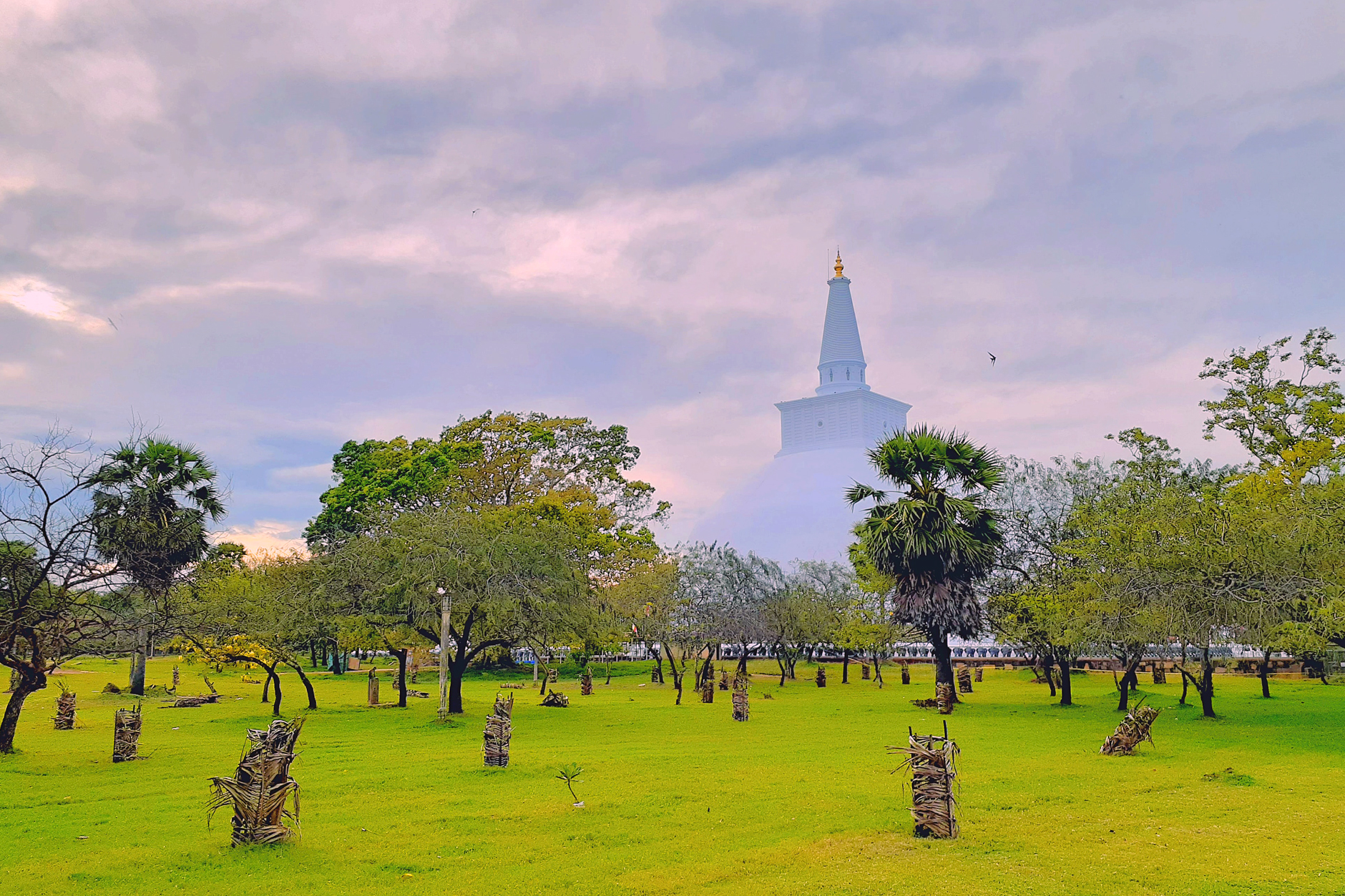
After breakfast, you travel to Jaffna by train, it's arriving at 10:30 hrs.
Yal Devi train resumed service between Colombo to Jaffna in restored tracks in 2014 after almost 25 years of absence due to the war. During the war, the tracks were completely damaged. The Guardian & Telegraph ranked this train journey and northern Jaffna as their top places to go in 2015.
Upon arrival at Jaffna Train station (14.45hrs), your guide will pick you up and you will travel to your hotel.
Image by Eshan Malaviarachchi on Unsplash

You will visit Nallur Kandaswamy Temple, this fascinating Hindu temple also known as Kovil in Tamil and shrine. It is dedicated to God Murugan – (God of Tamils). Nallur was part of the once-thriving Jaffna Kingdom. The Portuguese who captured Jaffna in 1560 demolished the Temple in 1621 leaving no traces of it. The temple then stood at Sankili Thoppu on the eastern side of Point Pedro Road (The site was later used for erecting a Christian Church). Jaffna again fell to Dutch in 1658. They were more tolerant on religious freedom and the temple was allowed to be rebuilt in its current location in 1734 by Don Juan Mappana Mudliyar as a humble temple dedicated to lord Murugan. This impressive temple is now fully restored. The temple hosts an enormous and spectacular Hindu festival for over 25 days in July/August, which climaxes on the twenty-fourth with parades of floats and displays of self-mutilation by entranced devotees.
You will explore Jaffna Fort – Clock Tower – Jaffna Library. You will then proceed to Oddtumadam, through Araly Road, Karainagar – Casuarina Beach. The return journey will be through Mathagal – Keerimalai Tank – Mavettapuram Knathasami Kovil (Historical Temple) – Thellipalai Amman Kovil (Historical Temple) – Chuunakam – Kantharodai and finally through KKS Road to Jaffna University and back to the Hotel.
The ancient Jaffna Fort is the second-largest existing fort in Sri Lanka. Originally built by the Portuguese in 1619 and re-built and expanded by the Dutch during the second half of the 17th and 18th centuries to facilitate trading activities of Sri Lanka’s northern region indicate not only Jaffna’s strategic importance to Europeans but its significance throughout Sri Lanka’s history. Nelson in his book Dutch ‘Fort in Sri Lanka’ claimed that ‘’ it was, as a technical fort, everything was done to the latest design at each successive stage and the final result was the strongest fortress in the East, the perfect defensive design in the days of powerful and destructive solid shot artillery of limited effective range. In Britain, fully comparable places are to be found only in the towns of Berwick, at Fort George near Inverness, at the citadel of Plymouth at Tilbury Fort on the Thames approaches to London. There are many fine artillery fortifications from the same period around the Indian Ocean. Yet it is doubtful whether, in its technical perfection and its completeness, Jaffna can be surpassed’.
Image by https://www.lonelyplanet.com/sri-lanka/jaffna-and-the-north

After breakfast, you will travel to Trincomalee.
Afternoon you will discover Trincomalee is a port city and has the fifth largest natural harbour in the world. The city is surrounded by lagoons, bays and hills and is situated on a peninsula. The white powder golden sandy beaches spread across the area offer its visitors calm azure waters to immerse themselves in the water. This is a perfect place for snorkelling, scuba diving and surfing. This port city has a history worth exploring, the strategic location of the natural harbour made it a city worthwhile conquering, and hence it was conquered by the Portuguese, Dutch and British. Trincomalee is fondly referred to as Trinco by the locals; the Anglicized Tamil word 'Trincomalee' denotes the meaning lord of the sacred hill.
Image by Mohammad Afras from Pixabay

Trincomalee, the most popular east coast seaside hamlet in Sri Lanka famous for its powdery sandy beach and turquoise blue shallow waters. During the months from July to September calm seas provide the best opportunities to go too deep waters to see these marine giants, the Blue Whales of Sri Lanka.
You will see Blue Whales on the East coast of Sri Lanka by sailing to their resident colonies. Whale-watching boat trip off the coast of Trincomalee will last for 4 to 5 hours. The speed boat leaves the shore of Trincomalee by 6.30 AM and mineral water bottles will be provided complimentary.
Image by Mohamed Nuzrath from Pixabay

In the morning you travel by boat to Pigeon Island Marine National Park. It is a fantastic place for snorkeling to see the spectacular marine life with over 100 species of colorful corals teeming with 300 types of reef fish. This Pigeon Island National Park has one of the best remaining coral reefs with high live coral cover in the country and is an ideal location for scuba diving and snorkeling.
Pigeon Island National Park consists of two small islands off the east coast north of Trincomalee. The island gets its name from Blue Rock Pigeon, a native endangered bird that lives within the rocks in these islands. The islands were declared a sanctuary in 1963 for the purpose of protecting these birds. In 2003 this area was upgraded to the status of a National Park and the boundaries were extended to include coral reefs around them. The islands are situated about 1 km off the Nilaveli coast in Trincomalee District.
After you will travel to Gal Oya.
Gal Oya National Park lies southeast of the Kandy in the eastern district. The Park was closed during the war for three decades. This Park was established to protect the catchments area of the Senanayake Samudraya (lake). With the wildlife richness of this wetland, the park is a natural habitat for a wide range of fauna and flora consisting of dry mixed vegetation including savannah grass and an extensive green cover. About 45% of the vegetation is evergreen forest, 33% savanna, 9% grassland, 2% china cultivations and the balance is water bodies dominated by Senanayake Samudraya.
Image by holidify.com
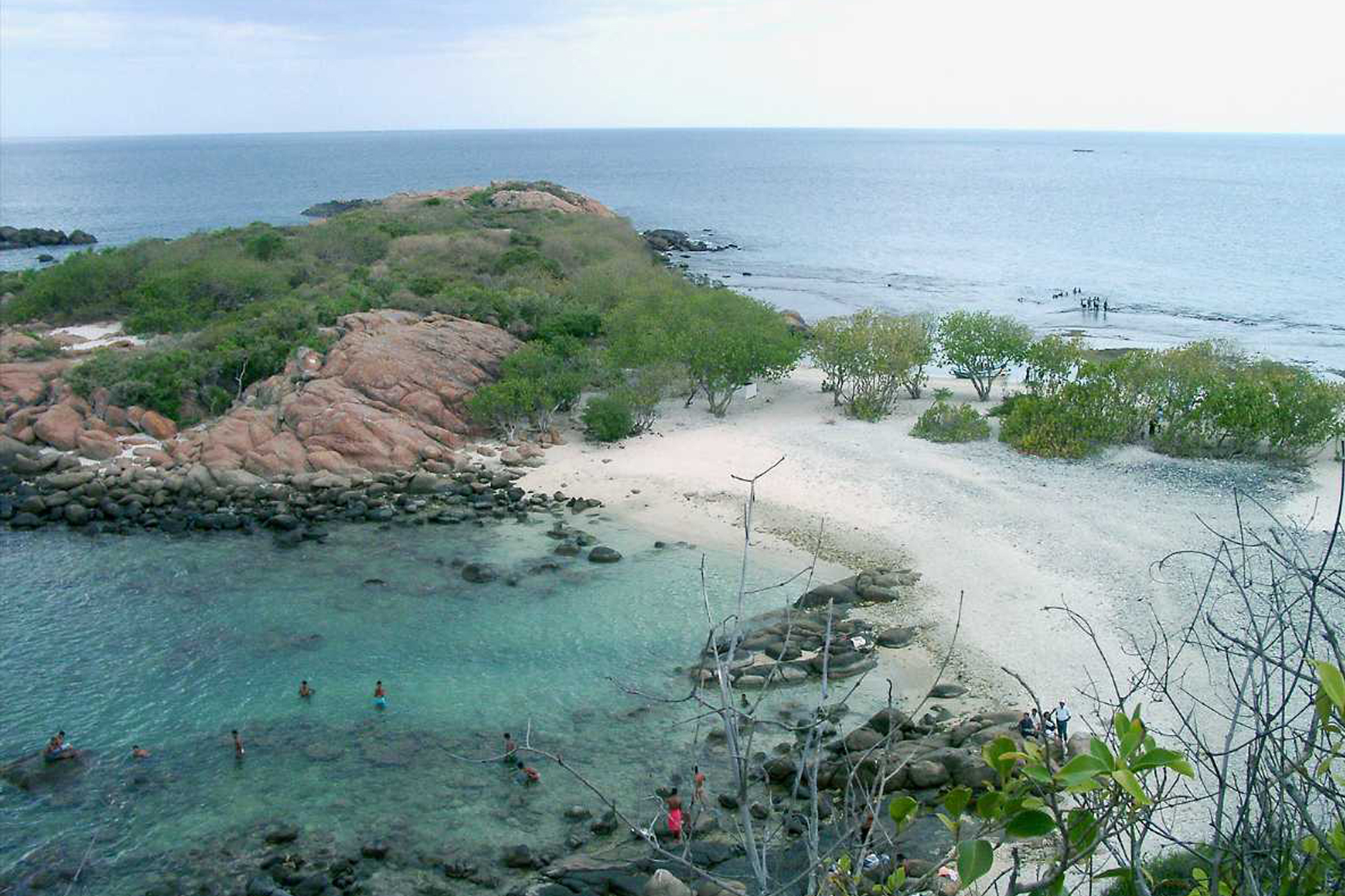
In the early morning, you will take a boat trip to watch the birds and wildlife of Gal Oya. Gal Oya National Park is known for its resident Elephant herds, flourishing birdlife, and 32 species of mammals including Langurs, Toque Macaques, Leopards, Sloth Bears, Wild Boar, Water buffalo, and Deer.
This is the only park in Sri Lanka where you can take a boat trip to watch the wildlife. A unique opportunity to observe the local wildlife from the stunning Gal Oya Lake: including Crocodiles, Deer, Elephants, and many rare and endemic species of Birds. This experience is the only one in Sri Lanka that enables you to spot wildlife from the water and truly immerse yourself in the animals’ habitats. You may be lucky enough to see the elephants swimming between islands or bathing at the lake’s edge.
Image by https://en.wikipedia.org/wikipedia.org
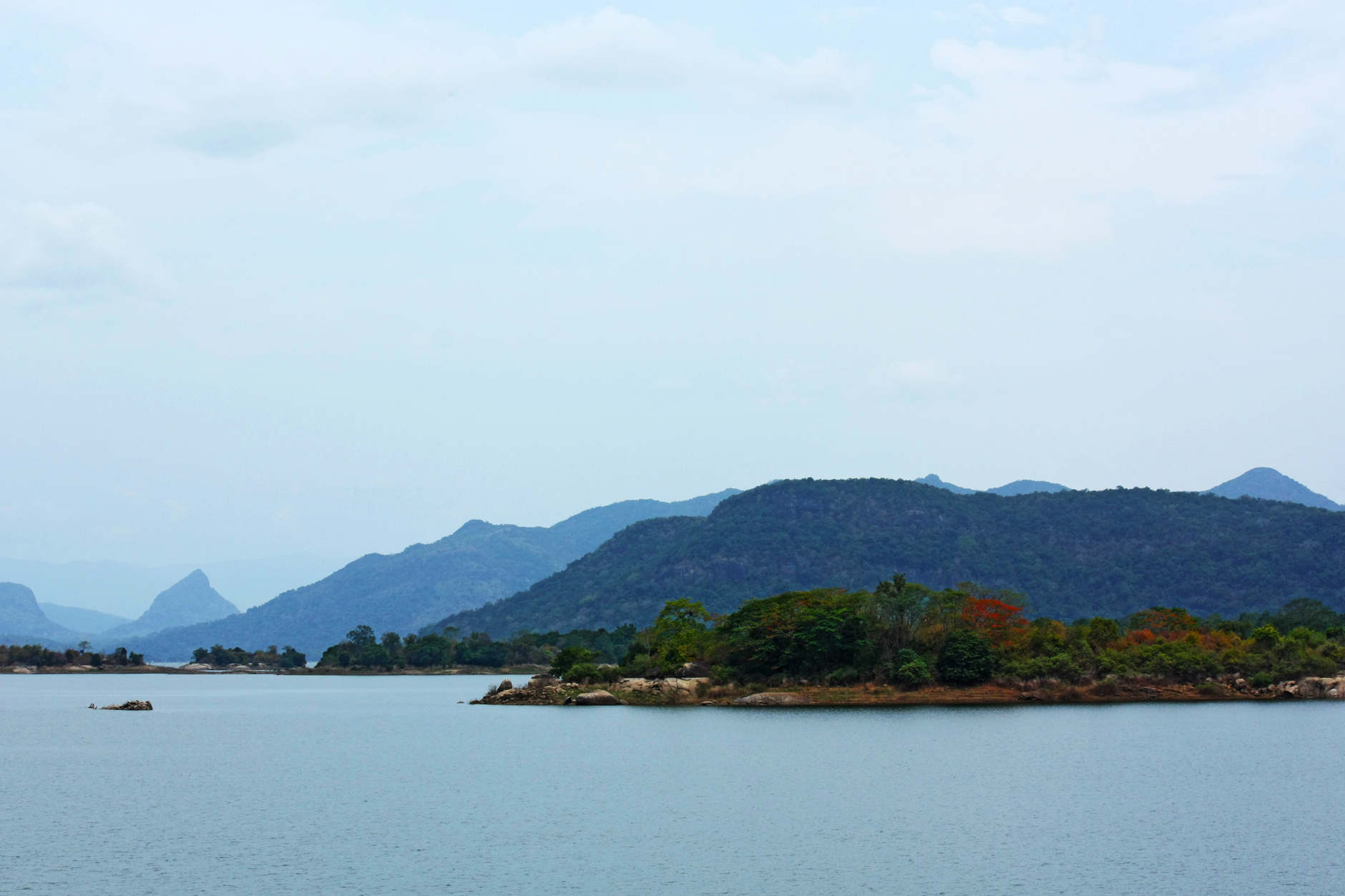
After breakfast, you will travel to Kandy.
Kandy is a beautiful historical city in the citadel of the country. It is not only known for its great kings who ruled the city for almost 225 years independently until the British took over in 1815, but it is also the place where the Sacred Tooth of Lord Buddha is laid in a magnificent temple. Strategically nestled amidst three mountain ranges, Kandy was initially built in this location as a natural fortress against attack. Kandy was not an easy target for foreign invaders who could gain control of coastal areas of the island without too much loss. Kandy’s main architectural monuments date mainly from the 19th Century when King Sri Vikrama Rajasinha, the last King of Kandy, constructed many new buildings. At the time of the eventual surrender of Kandy to British Rule in 1815, when King Rajasinha was captured, imprisoned, and finally deported to India where he died in 1832.
After they arrive in Kandy, you will visit Three Temple Loop.
you will be up for a very rewarding challenge, slip on your walking shoes, and embark on a journey to three compelling temples. Located in the central highlands, just a few kilometers to the southwest of Kandy, a seven-kilometers path links the Embekke, Lankathilake, and Gadaladeniya Temples.
Meandering on your merry way, the path takes you past fertile lush rice fields and through small bustling towns revealing colorful houses and explosions of vibrant saris worn by local women. En- route you will be greeted by many friendly and enthusiastic locals and stop to chat in local tea stalls. The three temples can also be conveniently linked by car.
• Gadaladeniya Temple
Famous for its beautiful stone carvings, this temple was built on a flat rock at Diggala in the 14th Century. Faded paintings from around that time provide many clues as to the manner in which the temple was built. The architecture is South Indian, so the general belief is that the workers were also brought from abroad.
• Lankathilaka
The majestic Lankathilake Vihare, believed to be one of the most magnificent architectural edifices in the Gampola kingdom, was built at the crest of a large rock named Panhalgala overlooking the Hantane mountain range in the Hiripitiya hamlet in Udunuwara.
• Embekke Devalaya
Embekke Devalaya, is a wooden temple situated in the Ambakka village, three kilometers from the Peradeniya Botanical Gardens. It was built in the 14th century by King Wickremabahu III. Adjacent to the main temple is a gedige (circular temple roof, raised off the ground by pillars) and inside the temple is a courtyard where originally the Hewisi drums and trumpet were played during the ceremonies.
Visiting all three temples by car will take about 2½ hours. The best time to visit is the morning, your & BEYOND guide will accompany you throughout the tour.
In the evening you will see Traditional Kandyan Dance – Kandy, Sri Lanka’s second-largest city is home to a Sinhalese cultural tradition of which Sri Lankans are justifiably proud. Rich in color and agile in their movements, the Kandyan Dancers evoke images of pageantry and traditions past. Lively and exuberant, spellbinding, and hypnotic, this Cultural Show is a spectacle to remember with its nimble dancers, energetic drummers, and fireproof firewalkers.
Image by Musthaq Nazeer from Pixabay
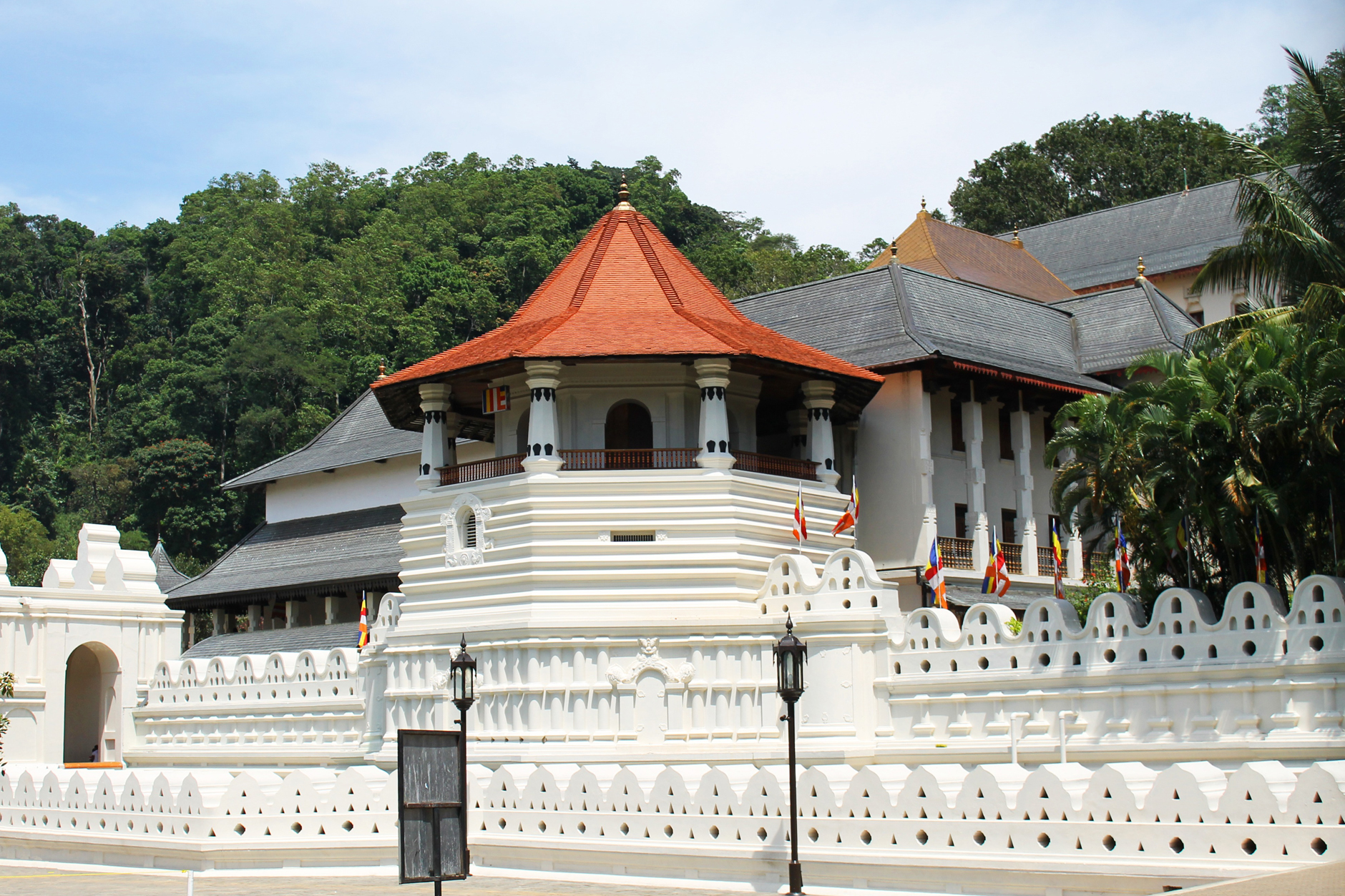
Waking up on the twelve days of your Sri Lanka holiday itinerary, all you feel is the luscious nature. Surrounded by bio-diverse rainforests and misty mountain ranges, Kandy is an ancient capital located in the central hills and is one of the best places to visit in your Sri Lanka itinerary. It is among the top Sri Lanka destinations with scenic beauty! So you wander around a royal botanical garden and sip a cup of tea in a café inside: while sinking in its spellbinding natural beauty.
In the morning you will visit The Temple of the Tooth & Buddhist Museum, Sri Dalada Maligawa dates back to the 16th century, though most of the present buildings were built in the 19th century. Venerated as the most important object in the Buddhist world, the Sacred Relic of the Tooth of Buddha is enshrined at the Temple. Brought from India 2500 years ago, it is said that the possessor of the Relic had the right to rule the country. The Relic is kept in a gold casket and stored amidst great security in the Inner Chamber.
After you will visit Peradeniya botanical garden. The botanical garden of Peradeniya, near Kandy, was first established in the 14th century. Since British times Peradeniya has become one of the finest botanical gardens in Asia. When the British eventually wrested control of the Kandyan Kingdom in 1815, the site at Peradeniya was a Royal Pleasure Garden, apparently being enjoyed by the last Queen of Kandy. In typical fashion, the British were quick to establish their own indelible stamp on this lush corner that exists in the cradle of a deep bend in the wide and languid river, the Mahaweli. Initially managed by Alexander Moon, the gardens started as little more than a coffee and cinnamon plantation. Today, spread over a sprawling 147 hectares, they are home to some 4,000 species from all corners of the earth. There is a pungent and fascinating spice garden that provides a fine introduction to the long-practiced medicinal science of Ayurveda and an exceptional orchid house sheltering some 300 varieties. A number of the wider pathways are tree-lined, including the classic “Avenue of Palms” which has the aesthetic power to transform a simple stroll into an event.
There is so much more to do in this city of art and beauty. You check your Sri Lanka itinerary and decide to go on a city tour. You walk through Batik and Wood Carvings shops, and Gem Museums. To visit a Spice Garden is to open up your senses to smells and tastes, old and new. Cinnamon, Ginger, Vanilla, and Cardamom are just some of the spices available in the numerous Spice Gardens in Kandy. Spices have long been important in the commercial history of Sri Lanka. With so many spices and herbs growing on the island’s shores, it is unsurprising that they were used to barter and trade between the sea-faring merchants, and have been a main export of Sri Lanka down through the ages. For centuries indigenous herbs and spices have been used for both medicinal purposes and in traditional Sri Lankan cuisine.
Image by Pix Ninty Four on Unsplash

After breakfast, you can travel to Nuwara Eliya.
As the road winds through the hills, you will pass picturesque waterfalls, tumbling down hillsides, and vantage points, which afford views over a panorama of rugged hills stretching far into the distance. There are many viewpoints to stop by along the way.
Nuwara Eliya is often referred to as ‘Little England’ Nuwara Eliya has a climate unlike anywhere else in Sri Lanka. Due to its high elevation, it offers a cooler and more invigorating climate than lower regions. Colonized by the British, the outskirts of Sri Lanka’s highest town, still retain its ‘yelled world feel and many of the original Hotels still retain their grandiose colonial style. Famous for its horse racing, Nuwara Eliya also boasts the impressive Golf Club which dates back to 1889. Stepping back in time when life was slightly more sedate, it is worthwhile visiting the Clubhouse to observe the photographs of life in Nuwara Eliya in years gone by. Rose gardens and abundant vegetable stalls crowd the sides of the road, whilst spectacular scenery will accompany you on the journey from Kandy.
Today you will visit Hakgala Botanical Garden. Hakgala Botanical Gardens is located within the Hakgala Strict Natural Reserve. The garden is also one of the best places on the island to spot endemic montane bird species & migratory birds during the North-East monsoon.
Dinner at the Hill Club Nuwara Eliya – The Hill Club was founded by British Coffee planters in 1876 as a private members club. To this day Hill Club remains exclusively for its members. As a temporary visitor, you will be able to experience British Colonial Traditions and travel back in time. From 7 .00 pm onwards the Dress Code is applicable, where gentlemen shall wear lounge suit/jacket with tie & shirt or Sri Lankan National Dress, and ladies shall wear suitable equivalent attire. In the case of children over 12 and under 18 years of age, boys shall wear at least a tie with a tucked-in shirt and long or short trousers and girls shall wear an acceptable mode of dress, when utilizing the dining room or other public areas. Jackets and ties are freely available and could be borrowed from the Club Wardrobe, free of charge.
Image by Ishan Kahapola Arachchi on Unsplash
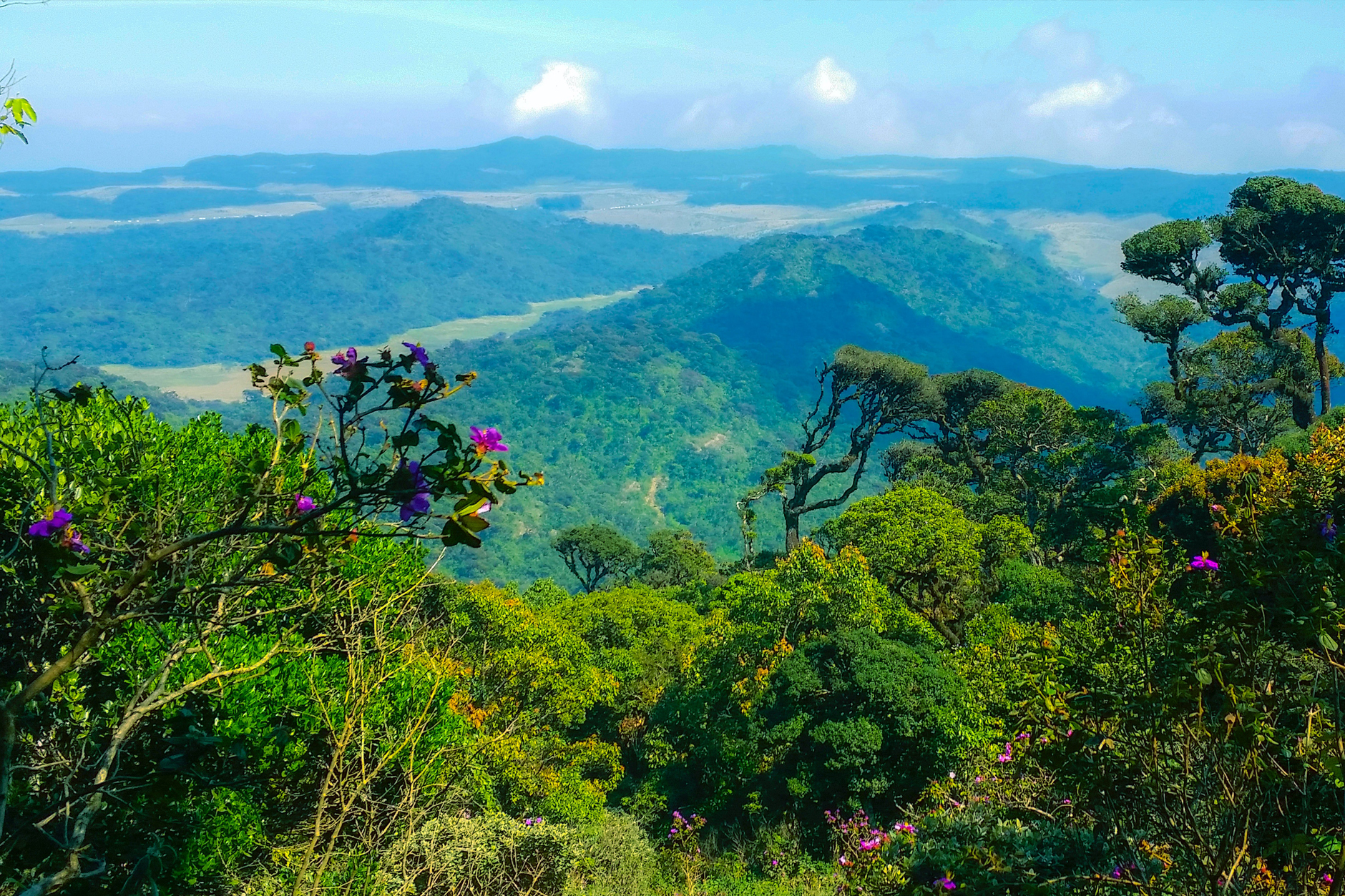
After an early breakfast, discover Horton Plains National Park. A plateau with an elevation of 2,134 m, sparsely populated, and almost without any roads. Here you walk for about 4 hours through mystic cloud forests and Patna grassland to "Worlds End", where the highland falls steeply almost a thousand meters, and the Bakers Falls. Horton Plains National Park is home to rare flora and fauna; Sambar deer and Bear-monkey as well as many birds. Horton Plains is located on a high windswept saddle at 2134 meters elevation; these plains are hard to reach. The scenery that can be seen from here is considered to be the finest view in Sri Lanka. Early morning the Indian Ocean rims the horizon, 80 km away. Horton Plains is Sri Lanka’s highest and most isolated plateau discovered by Sir Thomas Farr in 19 hundred. And named Horton Plaines with respect to the then-British Governor of Sri Lanka Sir Horton and it is the only place where you could see the bear monkey. This is one of the world’s best nature tracks. And certain plant species, birds, and insects you see only at Horton Plaines. Nature lovers will enjoy this wide, Patna-grass-covered plain, the haunt of several wild yet harmless animals and the home of many species of birds. Bridle paths through the plain will take you to the precipice, popularly referred to as “Worlds End’’ a sheer drop of 1050 meters. Lie on your stomach and peep over the ridge, the view when it is clear of mist, is simply magnificent.
Beautiful Sri Lanka is all you are asking for, and we give that on your wonderful Sri Lanka itinerary. Ella town is one of the best places to visit in Sri Lanka from your Sri Lanka tour itinerary. You experience one of the most picturesque train rides in the world when you pass beautiful mountains, steamy waterfalls, luscious forests, and villages with beaming locals: on the Ohiya to Ella train. You climb the Ella rock and walk along the rails on the famous Nine Arch Bridge. As promised by your customized Sri Lanka itinerary, you arrive at the edge of the Diyaluma falls yet, another Sri Lanka attraction. You jump right in the gushing water, and you feel like you are in an infinity pool, but it is all the magic of nature!
Image by Hendrik Cornelissen on Unsplash

Take breakfast in the hotel and afterward, you will visit the Udawalawe National Park safari and visit Elephant Transit Home en route to Yala. Elephant Transit Home (ETH), where the orphan wild elephants are treated, raised, and released back into the wild, also is located at Udawalawe. Visitors to this place can observe how the elephants are taken care of, twice a day. The total number of orphaned elephants exceeds 40, of which most of them are calves and juveniles. The animals become mature enough to live on their own and are released back into the wild. Park authorities keep constant vigilance on the newly released animals until they get used to the new life in the wild. Click the link for BBC Natural World Documentary (Elephant Island) 2013.
You have been patiently waiting for the daring adventures in your Sri Lanka itinerary, and finally, it is the day! Yala National Park is one of the most loved Sri Lanka attractions for its jungle ride full of excitement, and it is never an option to miss on your Sri Lanka tour. You are in the jungle, and suddenly you realize that it doesn’t matter at what time you venture into the wilderness because, as the name declares, it is wild! As promised by your Sri Lanka itinerary, you witness the mesmerizing leopards, gigantic elephants, and different species of vibrant birds hovering on tree branches chittering and chattering as you arrive. Even though we planned your Sri Lanka tour itinerary, nothing is planned in the jungle!
Image by Gautam Arora on Unsplash
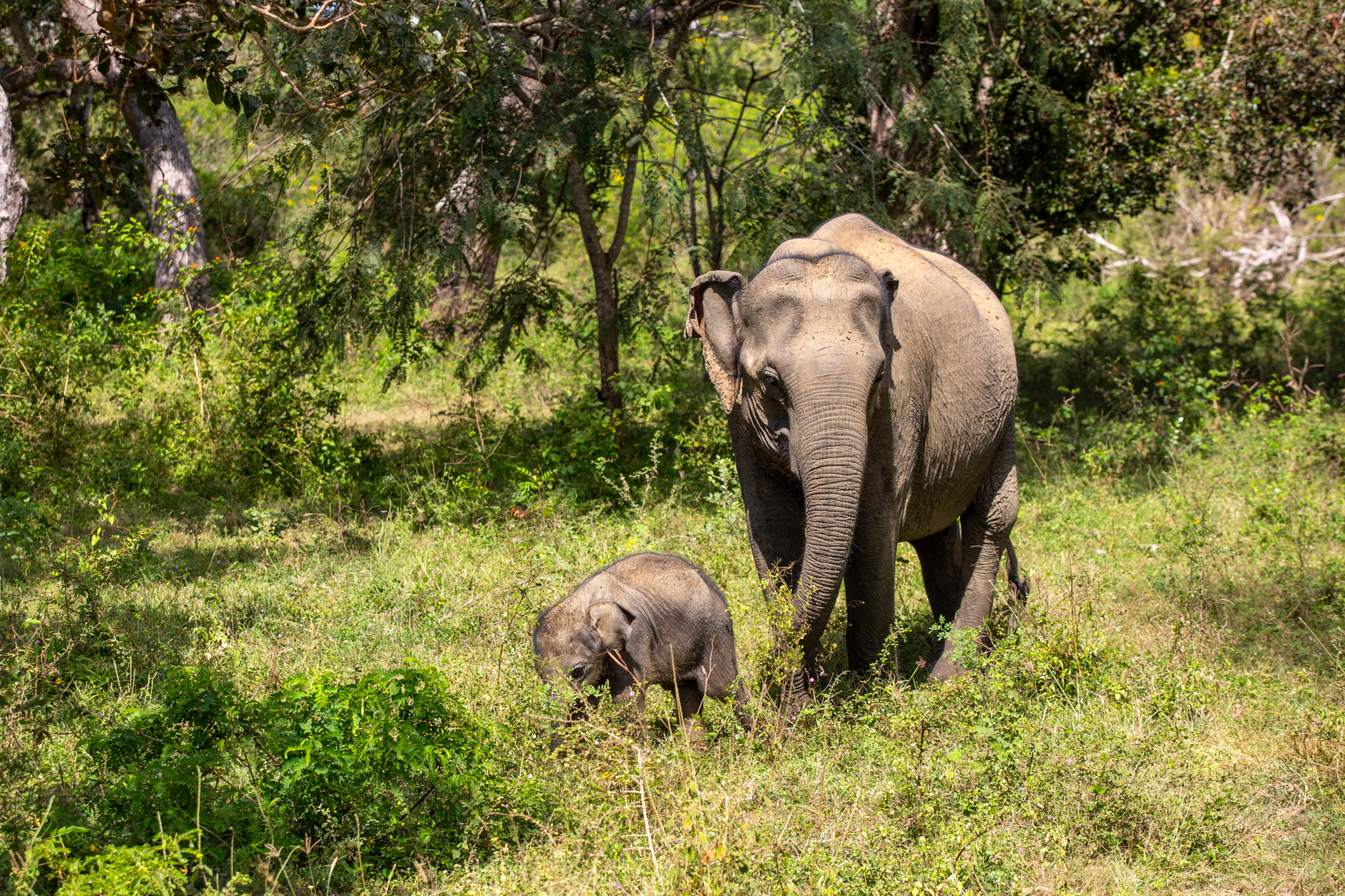
After breakfast, You will travel to Galle, along the way near the village of Weligama, where you can see the Stilt Fisherman. Weligama literally translates as ‘sandy village,’ Weligama has a long stretch of fine golden sand. Famous for its stilt fishermen, visitors can see this unique sight only in this part of Sri Lanka. No one knows where, or even when this form of fishing originated, but it is an old tradition that lives on in the modern world today. This centuries-old traditional method of fishing is one of the best sustainable practices to catch fish. The Stilt Fisherman spends 2-4 hours sitting on a thin plank, hoping to catch one or two fish for their family’s lunch or dinner.
Afterward, you will discover the Dutch Fort. There are many boutique shops along the narrow streets of the Fort as well as antiques, art, and craft shops. Galle is situated in southern Sri Lanka. It is the best example of a fortified city built by Europeans in the south and Southeast Asia, showing the interaction between European architectural styles and south Asian traditions. The Galle fort is a UNESCO world heritage site and the largest remaining fortress in Asia built by European occupiers. Other prominent landmarks in Galle include the natural harbor, the National Maritime Museum, St. Mary's Cathedral founded by Jesuit priests, and one of the main Shiva temples on the island. Galle offers a unique opportunity to create a visible demonstration of the conservation of its inheritance.
Image by https://en.wikipedia.org/wikipedia.org

Early morning start to watch the Blue Whale; you’ll leave early morning around 06:00 am from your hotel to see the Blue Whales. Mirissa is the most reliable site in the world for seeing the difficult and desired Blue Whale. It may also be the best place for seeing Sperm Whales too. Blue whales are the largest animals ever to live on earth growing up to some 33 meters long and weighing up to some 150-180 metric tons. They live individually or in very small pods or groups and frequently swim in pairs. Large Baleen Whales and Toothed Whales also come within sight of the shore. The calm ocean is abundant with krill which Blue Whales feed. From December through to April; there is an outstanding window of opportunity for observing Blue Whales and Sperm Whales close to shore.
Afterward, you will travel to Sinharaja.
From the pristine beaches back to the jungle! Your adventure in this Sri Lanka tour itinerary is not over yet. After a wonderful week in this tropical paradise: it’s time to explore the Sinharaja Rain Forest. You find a beautiful natural water spring surrounded by a luscious forest. You hop into it with a sweet king coconut in your hand. Ah! It sure feels good. After a relaxing time, you get back to the beautiful hotel reserved for you and have a delicious Sri Lankan meal with mouth-watering curries. The following morning of your Sri Lanka itinerary, you go for a village walk in the naturally beautiful Sinharaja with welcoming villagers. You get back to the Sinharaja forest and have your breakfast in the jungle! After all, this is an authentic Sri Lanka itinerary.
Image by The Rainforest Ecolodge Sinharaja

After breakfast, you will travel to Bentota, Travel time is approximately 2 hours and 30 minutes depending on road traffic.
Love for the sea never ends. On the tenth day of your Sri Lanka tour, you rent a bicycle in Bentota and cycle through the gorgeous city as you come across paddy fields, stunning ancient mural paintings in ‘Mullegoda temple’, and visit the Kosgoda Turtle Hatchery. You stop by to chit-chat with the friendly locals and enjoy the delicious local food. It is an amazing Sri Lanka itinerary if it includes the enchanting gardens resting in the heart of Bentota. But when we say Sri Lanka itinerary, no matter where it is: a little adventure awaits. So you jump back into the turquoise waters eagerly for water sports. You sit on the golden beach with your loved ones and think of your Sri Lanka holiday and itinerary while enjoying the beautiful sunset. A real vacation it is!
Image by confused_me from Pixabay

After breakfast you will take Boat Tour on the Madu River. You will explore this remote area and Cinnamon Islands. Madu Ganga or (Madu River) wet land spreads across 915 hectares, out of which 770 hectares is covered with water. Sail downstream for about a kilometre, the river opens its doors to 36 spectacular islands covering the rest 145 hectares. The inhabitants of these islands are mostly traditional fishermen and to some extent they are engaged in some traditional cottage industries such as producing peeled cinnamon and cinnamon oil.
Afterwards, you will be introduced to the local family after greetings and a cup of tea. Let your host know if you have any allergies or meal preferences. You will visit the bustling local market with your host. In the market, you will buy together with your host ingredients for your lunch. Your host will talk you through the core ingredients of Sri Lankan cuisine such as curry leaves, coconuts, local fruit and vegetables, pandan leaves and spices. Afterwards, you will visit the daily fisherman catch of the day; here you will buy fish or seafood from local fishermen. From here you will drive to the host place to prepare the rice and curries. You will also discover the secrets of coconut, learn to crack open and scrape out your own coconut, and taste samples of each dish as you go along. The end product is a feast of 5-7 unique dishes served in a lotus/banana leaf which you can eat local-style with your fingers if you are up for the challenge with a local beer or soft drink.
Image by tripadvisor.com
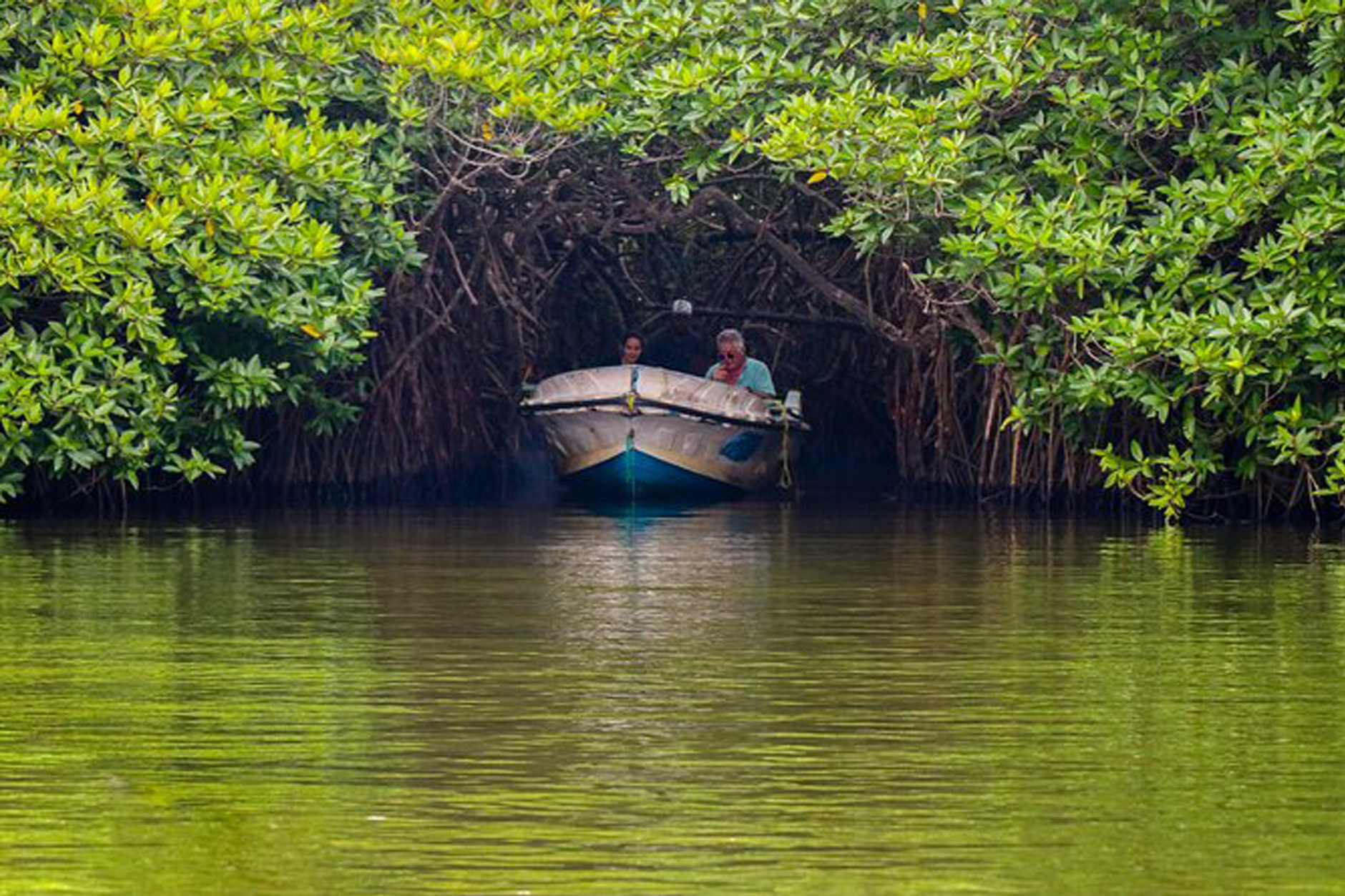
Stay leisurely on the beach.
Image by bentota-beach.com
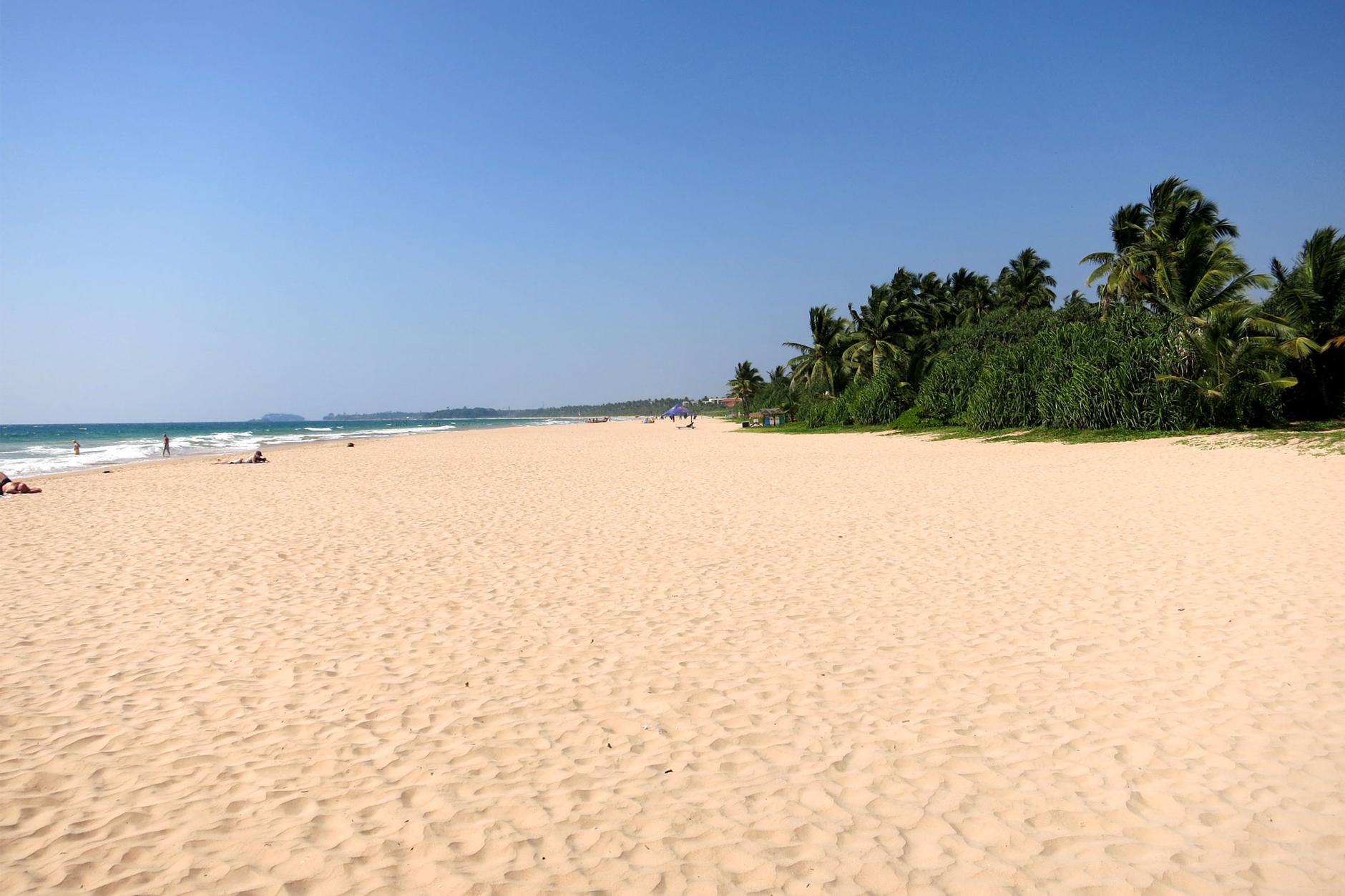
After early breakfast you will travel to Colombo, starting from Fort, Independent Square, Old Parliament, Pettah Bazaar, and Galle Face. You will also have time for shopping as well. Colombo Fort is the business district of Sri Lanka with skyscrapers and big international hotels. The Fort was built by the Portuguese and Dutch partly, later taken control by the British. In 1870 the British destroyed the Fort for urban development, and then they rebuilt some of the remaining buildings within it now. Colombo Fort is home to Fort Railway Station, the President's House, and Presidential Gardens, a palatial neo-classical building that was originally the home of the British Governors and is now the residence of Sri Lanka's president. The Lighthouse Clock Tower situated on Chatham Street commissioned by the wife of Governor Sir Henry Ward in the hope that it would teach the Ceylonese to be punctual. Around here is good for shopping for tea, and souvenirs, and exchanging money.
Independence Square is known as one of the most prominent locations in Colombo. It is commonly used as a place where Sri Lankans come together in unison for significant national celebrations and cultural activities. The Independence Commemoration Hall is also used to host ceremonies that mark national unity. This unique and outstanding monument positioned in the heart of Sri Lanka’s commercial capital Colombo commemorates the country’s independence from foreign rule. Sri Lanka gained independence on the 4th of February 1948 from the British who were the final colonial rulers of the country.
Opposite the Presidential Secretariat (old Parliament) is the Colombo breathing green space known as Galle Face. Here every walk of life comes for a relaxing time. Just to sit on the grass and watch the sunset over the Indian Ocean. Next to Galle Face is the grand Renaissance-style structure of Galle Face Hotel, South Asia’s leading Grande Dame, and the Galle Face Hotel is testimony to both Sri Lanka’s colonial past and its independent present. You can enjoy the English high tea on the Victorian-style Veranda or sip a martini facing the sea and enjoy the sunset.
Image by timeout.com

Shopping in Colombo city and travel to the airport. Travel time is approximately 01 hour depending on road traffic.
Image by https://onegallefacetower.com/index.php/gallery/
**** End of the Tour ****

Travel has helped us to undestand the meaning of life and it has helped us become better people. Each time we travel, we see the world with new eyes.

Wild Life Discovery Sri Lanka Tour offers some of Sri Lanka's nature and wildlife. In Sri Lanka, this tour covers Safari, Camping, Nature, and Wildlife. You will have your own personal chauffeur guide with a car or van i...
Read More

Classical Discovery Sri Lanka Tour offers some of Sri Lanka's highlights, hill country & beach stay in relaxing. In Sri Lanka, this tour covers culture, Heritage, Food, Nature, and Wildlife. You will have your own person...
Read More

Best of Sri Lanka Tour offers some of Sri Lanka's highlights, hill country & beach stay in relaxing. In Sri Lanka, this tour covers culture, heritage, food, nature, and wildlife. You will have your own personal chauffeur...
Read More
Copyright © Traveylo. All Rights Reserved.
Designed by Virtualpensar Pvt Ltd